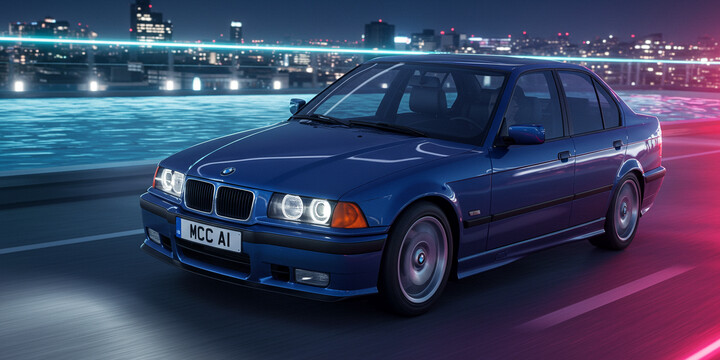
BMW 3 SERIES (1998-06) 318I 5DR TOURING 2.0 ES AUTO
The BMW 3 Series (1998-2006), specifically the 318i 5-door Touring 2.0 ES Auto, is a versatile and practical estate car that appeals to a range of drivers in the UK. Known for its balanced driving experience and solid build quality, this model is an excellent choice for small families, commuters, or those seeking a reliable, stylish vehicle for everyday use. Its estate design offers ample space for luggage, shopping, or outdoor gear, making it a popular option for active lifestyles.
What sets the BMW 3 Series Touring 2.0 ES Auto apart is its reputation for comfort, smooth handling, and a fuel-efficient engine that keeps running costs manageable. The automatic transmission enhances ease of driving, especially in city traffic or on longer journeys. Compared to rivals in its class, this BMW is often praised for its refined driving experience and durability. Its average valuation from used car data is around £1,178, with typical mileage of about 70,089 miles, and it has seen about four previous owners on average. If you’re looking for a dependable, stylish estate car from a renowned manufacturer, the BMW 3 Series (1998-06) 318i Touring provides a compelling option for a used car that combines comfort, practicality, and driving enjoyment.

average use

The latest mileage data for the BMW 3 Series (1998-2006) 318I 5DR Touring 2.0 ES Auto indicates that a significant portion of vehicles have recorded mileages in the 70,000 to 80,000 range, accounting for 40% of the sample. Additionally, there are noticeable holding points at the 60,000 to 70,000 and 40,000 to 50,000 ranges, each representing 20%. Interestingly, only 20% of vehicles have recorded mileages below 50,000 (either 40,000 to 50,000 or 60,000 to 70,000), suggesting that most cars in this sample are mid-life, with a substantial segment approaching or within the 70,000 to 80,000-mile range.

vehicle values

The data indicates that for the BMW 3 Series (1998-06) 318I 5DR Touring 2.0 ES Auto, private sale prices are predominantly distributed across two categories. The majority, 60%, are valued between £1,000 and £2,000, while a significant portion, 40%, are valued at £1,000 or less. This suggests that most of these vehicles are positioned in the lower price range on the private market, reflecting their age and potential condition or demand at the time of valuation.

production years

The data indicates that the majority of the BMW 3 Series (1998-06) 318i 5DR Touring 2.0 ES Auto vehicles from this model range were manufactured in 2004, accounting for 80% of the sample. A smaller proportion, 20%, were produced in 2005. This suggests a significant concentration of these vehicles around the 2004 model year, with fewer units from 2005, which might reflect production patterns or market availability during that period.

colour popularity

The data indicates that among the sample of BMW 3 Series (1998-06) 318i 5-door Touring 2.0 ES Auto vehicles, the majority feature silver paint, accounting for 60%, while blue is less common at 40%. This suggests that silver was the preferred or more popular colour for this model during that period, possibly due to its timeless appeal and ease of maintenance.

ownership cycle

The data indicates that for the BMW 3 Series (1998-06) 318I 5DR Touring 2.0 ES Auto, the majority of vehicles—specifically 60%—have had five registered keepers. Additionally, 20% of these vehicles have had four keepers, and another 20% have had six keepers. This suggests a relatively stable ownership pattern with most vehicles staying with a single owner over multiple periods, but there is some variation with a small proportion changing hands more frequently or less often than the average.

engine choices

The data indicates that all BMW 3 Series (1998-2006) 318i Touring models from 1995 are equipped with a 2.0-liter petrol engine. Specifically, 100% of the sample vehicles use petrol as their primary fuel type, with no variations observed in either engine capacity or fuel type. This suggests a consistent engine and fuel configuration across the dataset for this model and year range.












